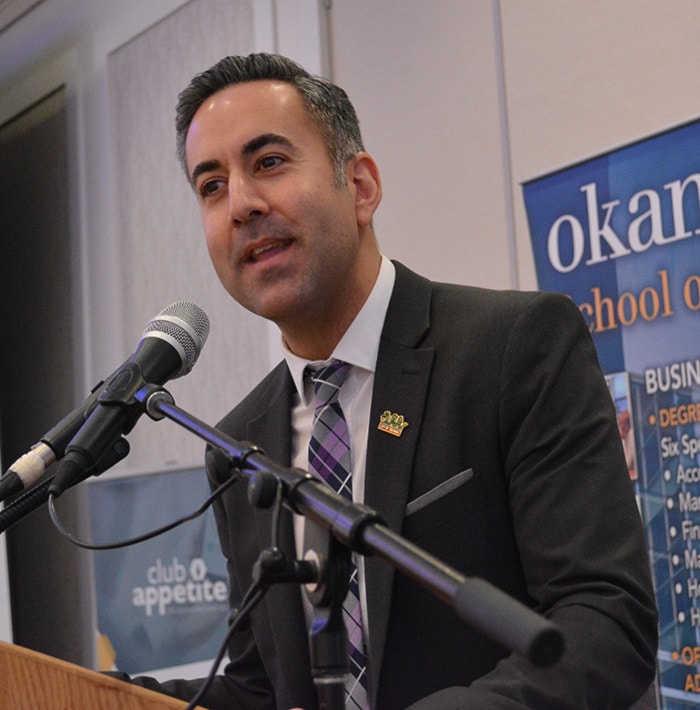Kelowna’s mayor has gone public with the city’s push to have residents served by one integrated water system instead of the five separate independent systems that currently exist.
Colin Basran used his annual state of the city address to the Kelowna Chamber of Commerce on Thursday to state publicly for the first time not only does the city want to have just one water system, it wants the final say about that system to rest with his council.
“We represent the entire city,” said Basran following his remarks to the chamber.
During his speech, Basran said the public would not stand for five different fire departments, with five different fire chiefs, all separately funded, so he questioned why there are five different water systems serving the city.
Currently, in addition to the CIty of Kelowna’s own water utility, Black Mountain Irrigation District, Rutland Water Works, the Glenmore-Ellison Irrigation District and the South-East Kelowna Irrigation District all provide water to residents in different parts of the city. Each water district is self-governed and all raise their own revenues through taxation.
Basran, who in the past has been reluctant to speak publicly about the issue despite repeatedly saying water is the number one issue for his council, said he felt it was time for the public to hear the call for one integrated water network directly from him.
While there are no finalized plans as to how the system would work, what it would look like or how it would operate, all five water purveyors have sat behind closed doors in a joint water committee for the last three years discussing the issue.
But that process appeared to have broken down because the parties could not agree about how to set the terms of reference for a formal study to look at the issue.
Basran revealed Thursday, the province has now stepped in and appointed two mediators, one of whom is former Shuswap area MLA and provincial cabinet minister, George Abbott, to break the impasse. Mediation will wrap up in a few weeks time, the mayor said.
Basran said there has already been “pushback” from the other water purveyors, and he expects to hear more now that he has gone public.
But Basran said he believes the public will support a call for one integrated water network instead of five separate systems, all requiring different levels of maintenance and improvement.
He said the city is not calling for a radical change right away but eventually it wants to see a single system across the city.
And, he stressed, whoever runs that system must answer to city council. Asked about going public during his annual state of the city address, the mayor said he felt it was time to start getting the message out, adding the move would make local water supplies safer—at any give time he said 35 per cent of the city’s population is on some type of water advisory.
He noted it would also stop duplication, improvements could be done is a cheaper, and more cost effectively way and all city water users in Kelowna would benefit.
In West Kelowna, the irrigation districts there were brought under the city’s umbrella over the course of five years.
While Victoria has not ordered Kelowna to do the same, Basran said the government has made it clear any future provincial funding for irrigation district improvements here will have to go through the city.
“So, we’re just doing what it appears the province wants us to do,” said Basran.
•••
In his address, which highlighted many of the city’s accomplishments in 2015, Basran also addressed the recent BMO report that said Kelowna is the worst place in the country to find a job.
The mayor questioned the study’s conclusion, saying he has concerns in part because the study that the report is based on is a one-moth “snapshot” and the sample size used is extremely small.
According to Basran, just 100 homes are included and, he added, even Statistics Canada warns about putting too much stock in the study because of the small sample size.
Still, he said the city is always looking at ways it can help increase employment here, citing economic development initiatives such as publicly-funded construction projects, moves to attract business and helping businesses succeed with projects like its fibre optic network.
That network, set up primarily for the city to connect its facilities, allows clients to move large amounts of data through the system.
He credited the network for the arrival of a large animation studio in the city and said council has added money to the budget for the fibre network system to take it all the way out to the airport.
The network connects city facilities and offers use to large corporate clients for a fee.
